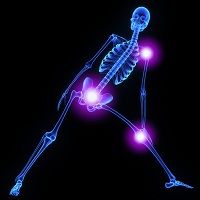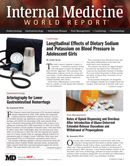Publication
Article
Internal Medicine World Report
Knee Osteoarthritis: Corticosteroid Injection-Exercise Therapy Combo?
Author(s):
Osteoarthritis (OA) is a crippling condition with the majority of cases taking place in the knee – but what's the best form of treatment?

Osteoarthritis (OA) is a crippling condition with the majority of cases taking place in the knee — but what’s the best form of treatment?
Many physicians often recommend a combination of treatments for knee OA, including pharmaceuticals and therapy. However, until now, there has not been evidence to support the clinical benefits of the approaches.
Researchers from Copenhagen University Hospital, Denmark conducted a study to determine whether administering corticosteroid injections before exercise therapy improved patients’ pain outcomes. The findings were published in JAMA Internal Medicine.
“The participants had radiographic confirmation of clinical OA of the knee, clinical signs of localized inflammation in the knee, and knee pain during walking [at least a 5 on a 0 to 10 pain scale],” the authors wrote.
Taking place between October 1, 2012 and April 2, 2014, the randomized study included 45 patients who received corticosteroid injections while the other 44 were given a placebo in their knees. The corticosteroid group received intra-articular 1-mL injections of 40 mg/mL of methylprednisolone acetate (Depo-Medrol) dissolved in 4 mL of 10 mg/mL lidocaine hydrochloride. The placebo group received a 1-mL isotonic saline injection that was mixed with 4 mL of 10 mg/mL of lidocaine hydrochloride. All 89 patients began a 12-week exercise program two weeks after the injections.
The researchers surveyed the patients’ physical function and inflammation at baseline, the beginning of the exercise program, and end of exercise program. Using the Pain subscale of the Knee Injury and Osteoarthritis Outcome Score (KOOS) questionnaire, they gathered scores from 0 to 100 noting that the higher the number the better the outcome.
So what were the results?
“We found no statistically significant group differences in any of the secondary outcomes at any time point,” the team confirmed.
The biggest difference between the groups was witnessed at week-14, which marked the end of the exercise program. Even then the outcomes were not statistically significant. The corticosteroid group had an average KOOS Pain subscale score of 13.6 while the placebo group was only slightly higher at 14.8 — only a 1.2 point difference.
This report suggests that there is no benefit to administering corticosteroid injections before exercise therapy in knee OA. However, the researchers acknowledged the necessity for further research to identify useful treatments for the condition.






